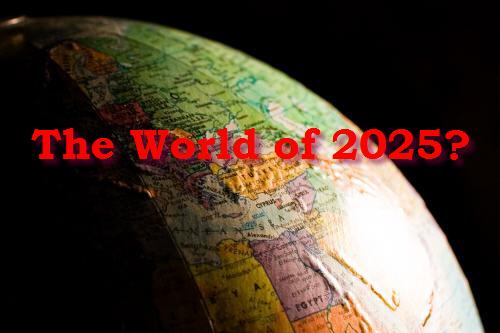
The National Intelligence Council’s “Global Trends 2025: A Transformed World,” released on November 20, poses a fascinating variety of alternate futures.
While the document does not contain predictions, as was made clear by NIC Chairman Thomas Fingar in a presentation at the Atlantic Council the day the report was released, many of its “indicators” or “trends” suggest a relatively pessimistic view of the future. For example, energy constraints or global warming are likely to be serious problems. America’s relative decline is a major theme, as is a suggestion of greater dangers from terrorism.
However, on balance the report is quite optimistic regarding one region of the world: Asia. The corollary to America’s relative decline is, of course, the rise of India and China as more powerful economic and political players on the world stage. The report even describes three Asian countries as other potentially stronger states: Indonesia, Turkey and a post-clerically run Iran.
The report also sees the state capitalism of today’s China and Russia as a possible model for future economic development in many other countries and an alternative to the democratic capitalism of the West. If this were to occur, it would enhance China’s already growing role in the world, create new allies for the Middle Kingdom, and strongly influence its present strategic partnerships.
In its discussion of demographic trends, the report cites potentially devastating consequences for Europe and Japan in their aging populations, and perhaps even more serious problems with the “raging hormones” of youth-bulge populations in the “arc of instability” stretching from Africa through the Middle East and into Central and South Asia. By contrast, India’s relatively youthful population in 2025 is seen as a major economic asset. Even China, whose population is also aging rapidly as a result of population control measures such as the one-child policy, is not expected to suffer as much from the burdens of a graying population as Europe or Japan. The report also notes that many countries in the “arc of instability” are developing more quickly than predicted in the NIC’s 2020 report “Mapping the Global Future,” the antecedent to the 2025 report. These countries thus are not as likely to experience the problems of disaffected youth; most of these “graduates” from instability are in Asia.
The report suggests that the process of unifying the Korean peninsula has begun and matured by 2025, with generally good implications for the region and the world. It discusses stronger Asian regionalism as a possible future trend. While this may have some negative consequences for the world economy and for Europe and the U.S., in general this trend will more likely promote stability and greater prosperity for Asia, and possibly for the rest of the world as well.
Certainly, the report does contain some warning signals for Asia. While the NIC says that China might become a more open society, it does not believe that the political (but not economic) domination of the Chinese Communist Party will end. The report cites the potentially dire consequences of a major pandemic, with the most likely candidate being avian influenza originating in Asia, with the worst consequences for that region. There is a discussion of possibly growing antagonism between China and Japan, but other scenarios that are more stable are given equal, if not greater, weight. Finally, the report is pretty pessimistic about Pakistan.
On balance, though, the NIC’s 2025 report is remarkable for its expectation that likely trends over the next 17 years will see a more prosperous and influential Asia, even as much of the rest of the world faces an uncertain future.
Joseph Snyder is director of the Asia Program at the Atlantic Council. Photo by Flickr user ToastyKen modified by the author under Creative Commons license.
GLOBAL TRENDS 2025 SERIES:
- Global Trends 2025: A Transformed World
- NIC Chairman Thomas Fingar Presents “Global Trends 2025”
- Predicting the Future is Hard – And Necessary – James Joyner
- U.S. Dominance Ending – James Joyner
- Terrorism Here Today, Gone Tomorrow? – James Joyner
- Asia’s Ascendency Seen in Intelligence Forecast – Joseph Snyder
- Climate Change Will be More Severe in 2025 –Erica McCarthy
- Economic Rise of the East – James O’Connor
Image: globe-2025_2.jpg
